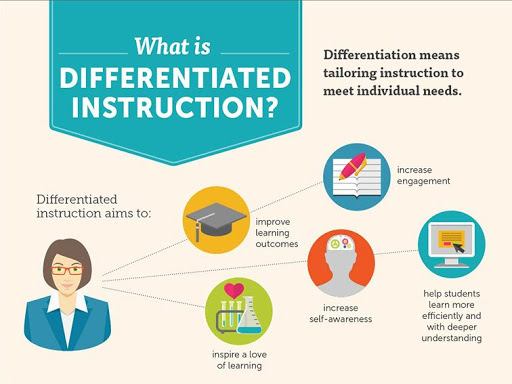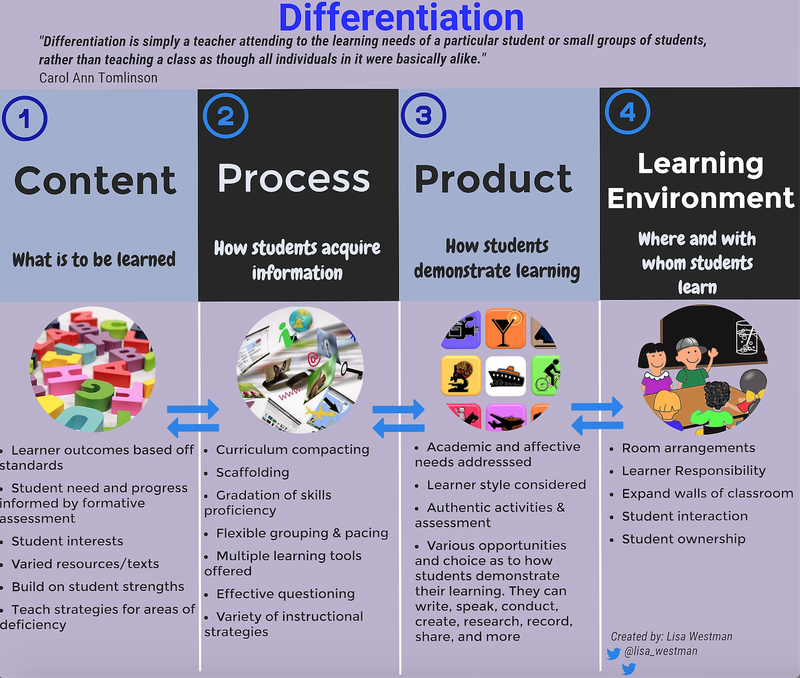e-Learning Ecologies MOOC’s Updates
Software for differentiated instruction
Digital differentiation strategies can help provide precise individualized learning that customizes assignment lengths, language, scaffolded activities, compaction, and interactive media. Students can work independently at their own pace and style, and absorb learning quickly. (https://medium.com/inspired-ideas-prek-12/digitally-yours-4-ways-technology-based-differentiated-instruction-propels-learning-e0ea0ff0d4ab)
A teacher can differentiate by modifying:
- how they teach (process);
- what they teach (content);
- the product (evidence of learning); and
- the learning environment.
The process through which a teacher can achieve differentiated learning are the following:
- Planning — As teachers develop lesson plans, planning helps them consider how they will assess the instruction, to determine whether students have grasped the materials
- Gathering Evidence — Throughout the instructional phase, teachers informally and formally gather evidence of student understanding via an Informal Assessment Checklist and Student Assessment Record
- Summarize Findings — Teachers take time to reflect on the assessments to summarize findings and make plans for follow-up, as a critical part of any lesson
- Use Results — Teachers use results of their findings to differentiate instruction or to adjust or confirm future lessons
A comprehensive list of Websites and Apps That Support Differentiated Instruction can be found at this page of the University of Kent: https://www.kent.edu/sites/default/files/file/Differentiation%20Handout.pdf
Examples of Software for differentiated instruction
SRA FLEX Literacy, a high-rigor intervention program for Grades 3 and up, offers differentiated instruction in The Digital Experience, using computer-based instruction focused on skill development. Individualized and motivating technology includes scaffolded instruction, practice, assessment, remediation, and review opportunities. FLEX Literacy utilizes technology as a way to ensure that students do not just read more, but read more targeted text. By targeting students at their individual reading level, FLEX Literacy goes beyond differentiation, and is able to individualize education to the unique needs of each student.
Building Blocks is a supplemental math program that uses personalized lessons and research-based learning paths to improve student math skills and confidence through games and adaptive learning technology. The engaging math program contains nearly 300 fully animated digital activities for PreK–8 math practice, conceptual development, and remediation.
Number Worlds is a PreK-8 math intervention program with many phases of assessment
Other sources: https://pdo.ascd.org/lmscourses/PD11OC109/media/Tech_M4_Reading_Using_Technology01.pdf
https://www.edutopia.org/stw-differentiated-instruction-budget-resources-downloads



